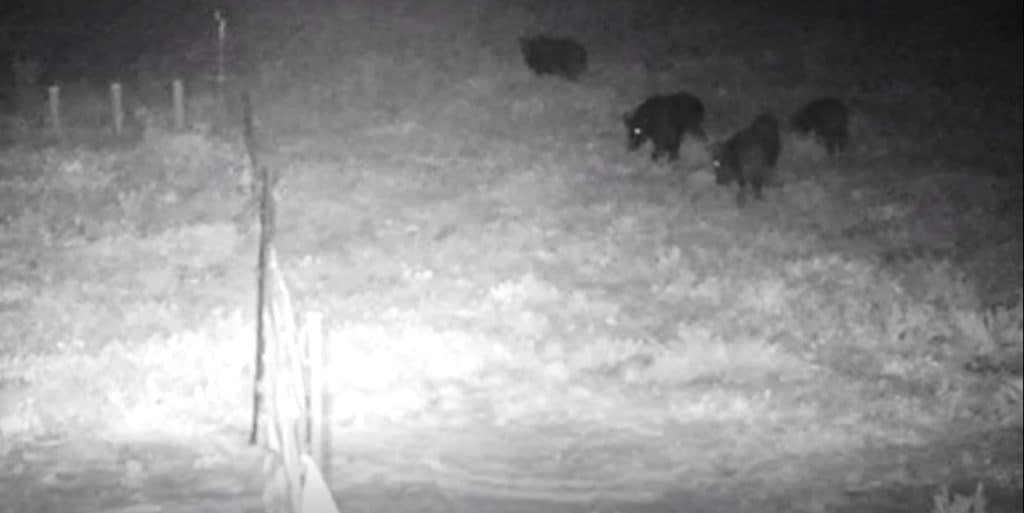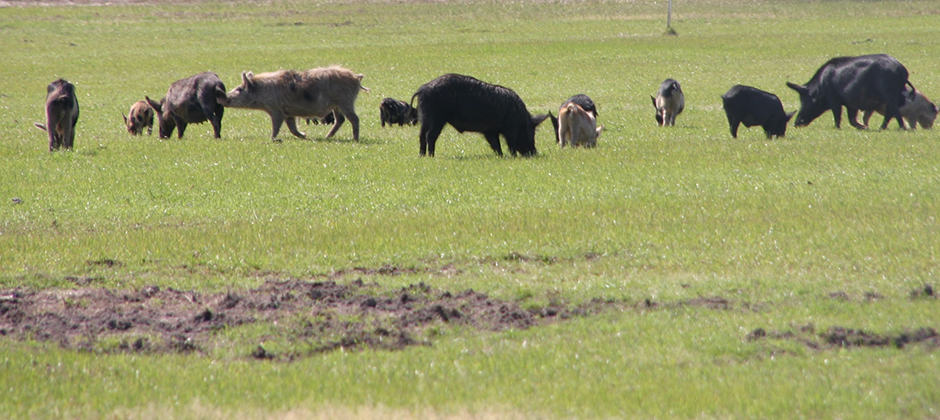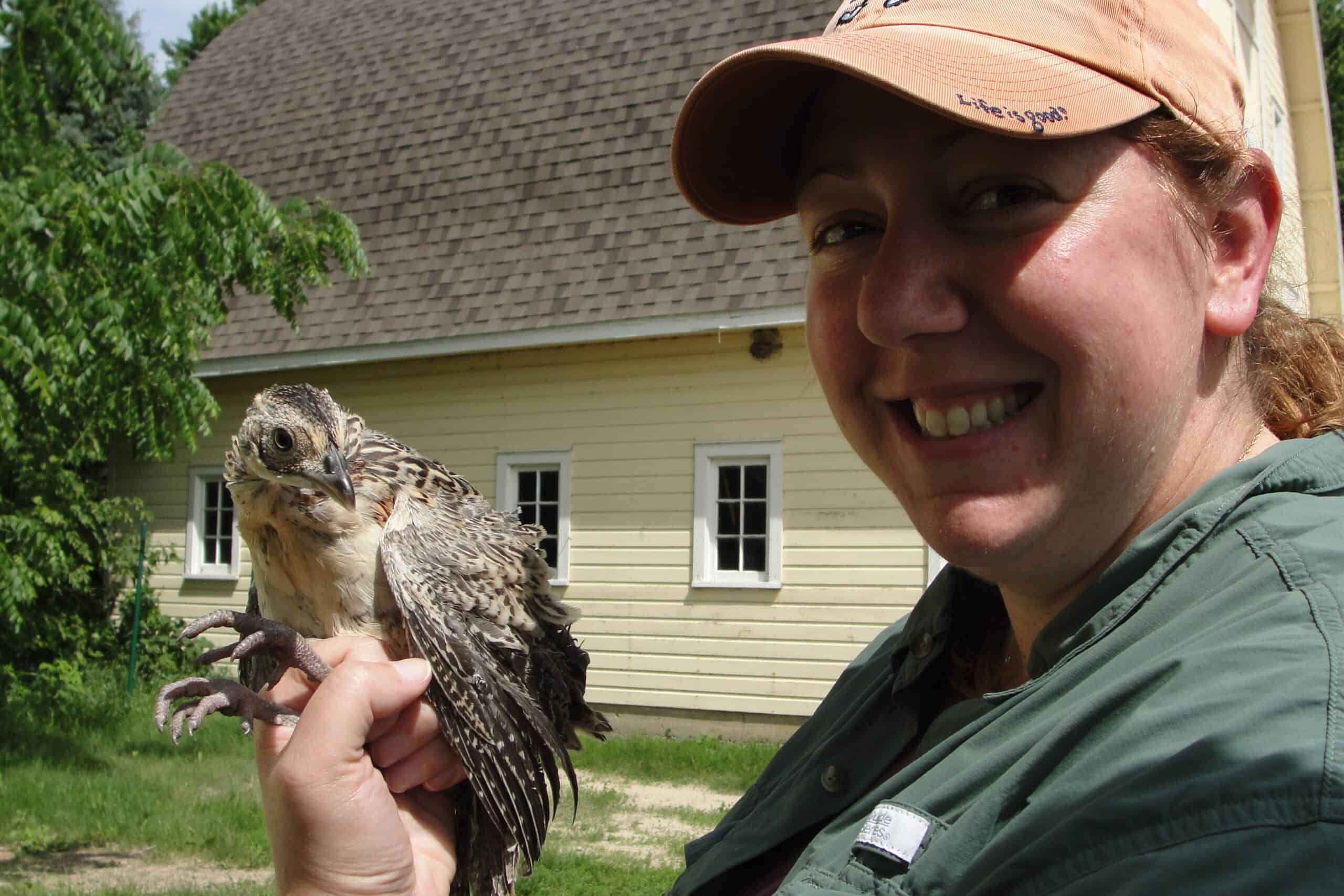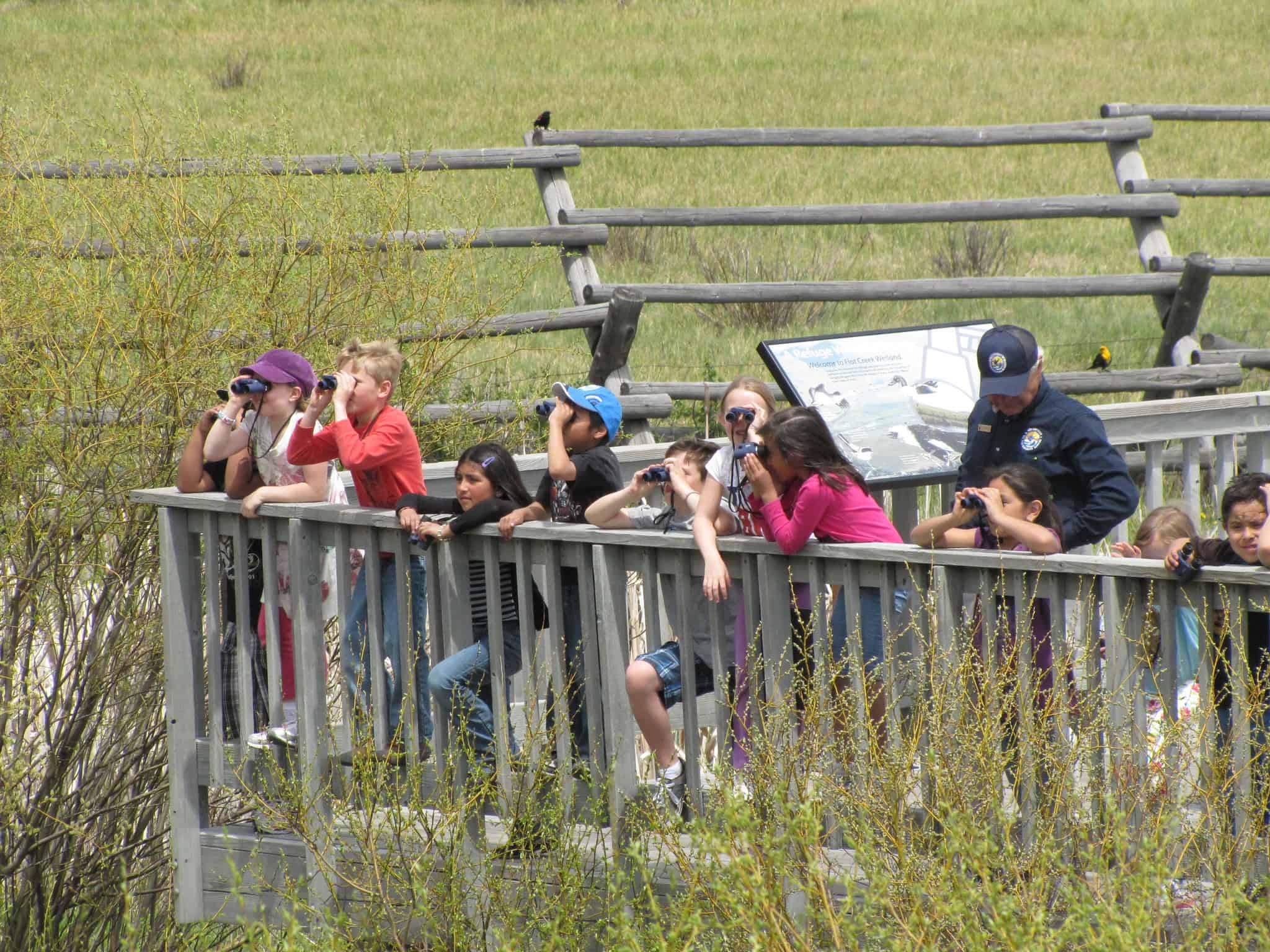Share this article
Can turbo fladry reduce damage due to feral swine?
Turbo fladry has been used to reduce livestock predation by wolves (Canis lupus) in several Western states. While its use is often in limited areas and seasons, such as calving or lambing pastures, it has been shown to effectively reduce predation at times.
The Wildlife Services program in Tennessee/Kentucky wondered whether its use could also reduce crop damage from feral swine (Sus scrofa).
This year WS began installing turbo fladry — electrified polywire marked with plastic flagging — around a Tennessee producer’s 5-acre crop of newly planted sweet corn. Last year, more than half the crop was gone within a week of planting.

A trail camera shows feral swine outside the fladry line. Credit: Wildlife Services
Wildlife Services installed the fladry in a double strand configuration. We combined with a standard solar-powered charging system, and we installed trail cameras to monitor the field along the turbo fladry line.
Trail camera video footage revealed feral swine within feet of the fladry line several times. Only on a single occasion did one hog breach the line. The video showed that the swine nervously approached the fladry in its attempt to exit the field, only darting under the line after several false starts. No other breaches occurred.
The producer reported zero crop losses by feral swine this season. Based on these results, we have expanded our use of turbo fladry as a feral swine deterrent and plan to collaborate with the National Wildlife Research Center to initiate field trials here in 2021.
Header Image: Feral swine can devastate farmers’ crops. Credit: Wildlife Services








